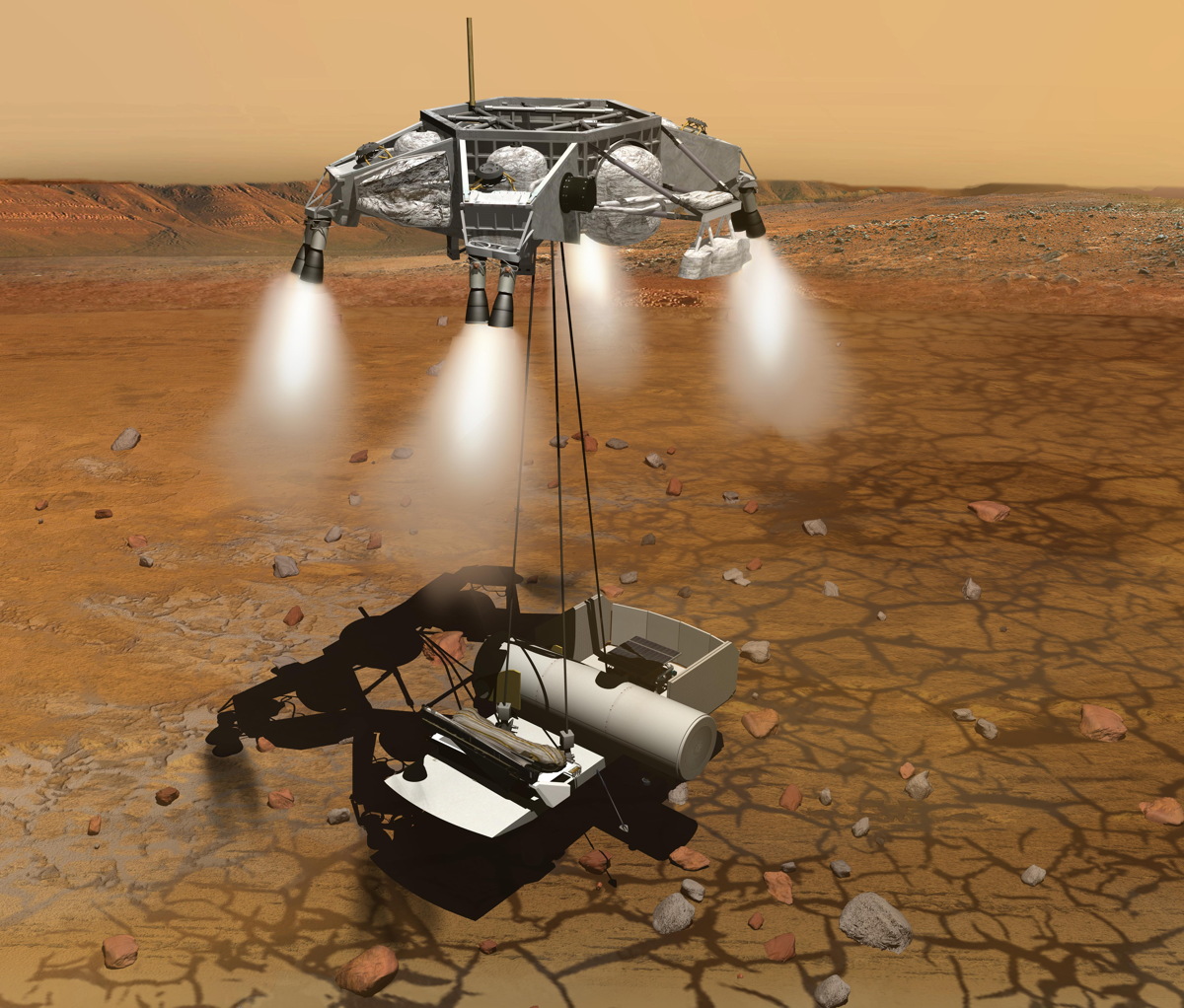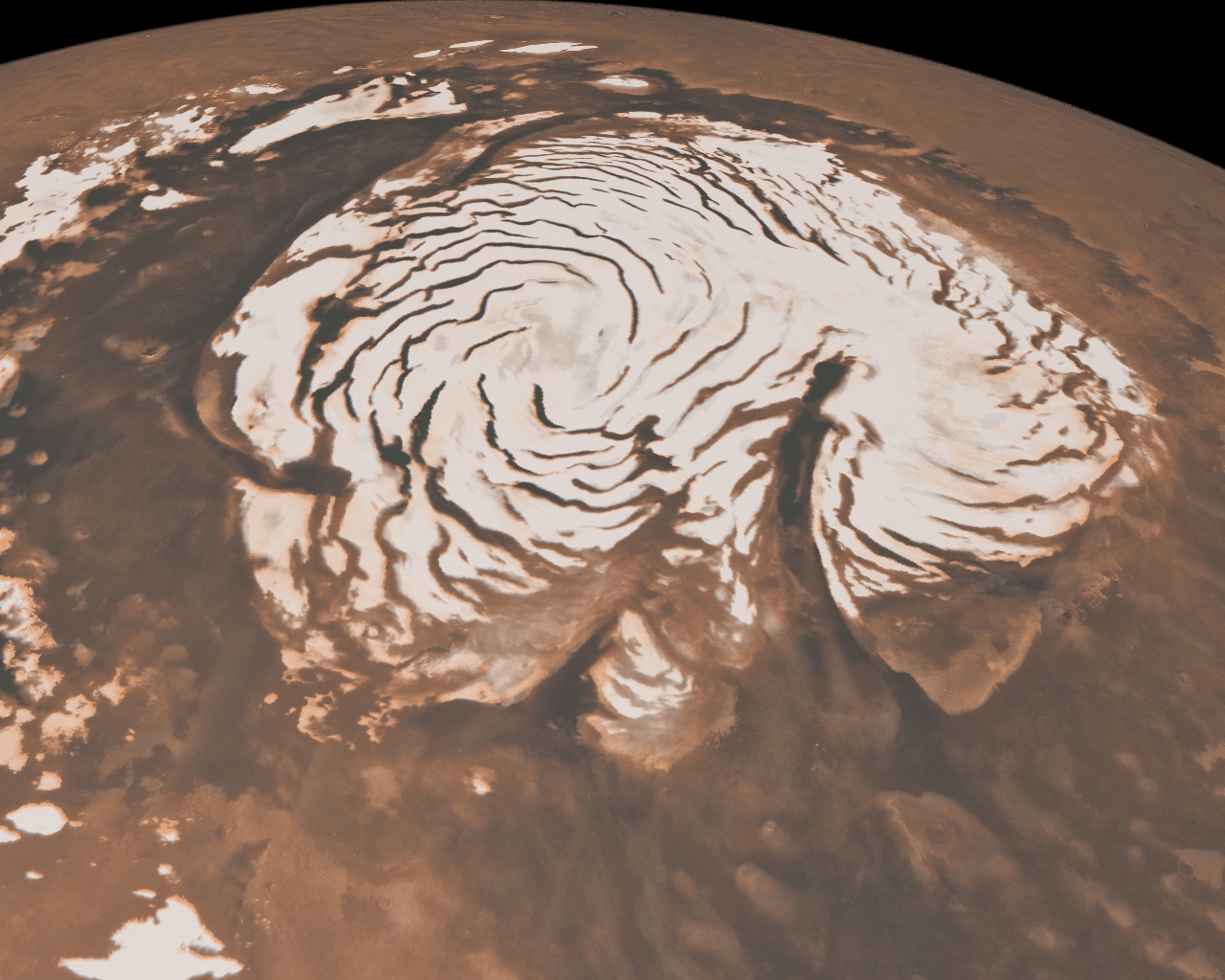How Can We Protect Mars from Earth Germs, While Searching for Life?

The search for life on Mars presents us with many challenges – not the least of which is microbial contamination. How do we ensure that microbes from Earth don't hitchhike all the way to the Red Planet and spread there? When a spacecraft is on the surface of Mars, what steps are needed to protect the environment from changes that could hurt any Martian life that is there?
Finally, once we do scoop up potential microbes for analysis on Earth, how do we ensure that the Mars sample doesn't pose a risk to humans and other creatures on our planet? As biologist John Rummel recalls, the lesson of the H.G. Wells book "The War of the Worlds," a fictional book about a Martian invasion,is that even microbes can be deadly.
"The important thing about planetary protection is it's a two-way affair," said Rummel, who was with East Carolina University as a biologist when he led the team that published a recent study on the possibilities of the growth of Earth life on or under the surface of Mars.
"The idea is to not take microbes to places where you would have them grow and multiply on a planet, and in particular, affect the ability to find what was there before Earth contamination. We don't want to contaminate what we want to study. The other thing is, if there is any life there, it's uncertain if it would pose a danger to the Earth's biosphere if we brought a sample back robotically, or with Mars astronauts returning to Earth." [The Search for Life on Mars: A Photo Timeline]
This question was considered somewhat ineffectively during the Apollo missions, Rummel pointed out, when astronauts came back to Earth and in the first few missions, were placed under quarantine for 21 days.
The crews would walk across an aircraft carrier eventually wearing nothing but masks and light jump suites, exposing the ship and its crew to potential contamination. And of course, we now know that 21 days is a short incubation period for many viruses, and for prion-spread diseases such as bovine spongiform encephalopathy (sometimes referred to as mad cow disease). The incubation time of these illnesses was not well-known at the time.
Rummel, currently a visiting scholar at McGill University, helmed a paper looking at "special regions" on Mars — locations where habitable conditions are most likely to be present — and how to protect them. Published in the journal Astrobiology in November, the paper is titled, "A New Analysis of Mars 'Special Regions': Findings of the Second MEPAG Special Regions Science Analysis Group."
Breaking space news, the latest updates on rocket launches, skywatching events and more!
Sterilization standards
A search for habitability is one of the main goals of the Curiosity rover mission, which landed on Mars in 2012. While roaming around Gale Crater, it found ample evidence of past water in the form of an ancient stream bed just months after landing. More recently, it has found that rocks on the crater floor are slanted in a way that suggests the entire area was a lakebed in the past. For how long the water persisted is one question preoccupying NASA researchers presently.
Following on from Curiosity will be the Mars 2020 rover, which will again search for habitable environments, and possesses instruments that can search for organics, while caching a sample for later return to Earth. It is considered a key element in NASA's ability to stage a sample return mission from Mars in the coming decades.
There is a tension, however, in searching for habitable environments — or life — with an Earth machine while not contaminating the Martian surface. According to Rummel, Curiosity was restricted from landing in an area that could have surface or shallow subsurface ice. That's because the rover is powered by a plutonium generator, which is always hot. There was a risk that after a crash, the heat from the generator could melt the ice and provide a warm, wet pool under the surface for several months to several years, providing a potentially habitable environment for the reproduction of any earthly microbes that took a ride.
Curiosity and other modern Mars spacecraft are treated differently than the Viking landers of the 1970s, and are not fully sterilized. While the Vikings were baked for 54 hours to make them as sterile as possible, witha great deal of care and planning, this brute-force method could hurt today's sensitive electronics, and has not been required by NASA since a 1992 report of the US National Research Council suggested that Mars (not including the "Special Regions") did not require it. That is why, according to Rummel, Curiosity was sterilized to a lower standard than Viking. The standard was still enough to meet planetary protection requirements, but when it comes to Mars "special regions" the researchers didn't want to take any chances.
Temperature and water
The standards for special regions have evolved under the International Council for Science's Committee On Space Research (COSPAR), which first considered planetary protection in the early 1960s. The committee's influence is shown in the United Nations' Outer Space Treaty of 1967, which among other items says space exploration on the Moon and other "celestial bodies" must be done in a way "so as to avoid their harmful contamination."
The first successful landings on Mars took place in 1976, and the next ones happened in 1997 with NASA's Pathfinder lander mission and its Sojourner rover. With the planning of more Mars landing missions — particularly the Spirit and Opportunity rovers, which launched in 2003 — the question arose aboutthe potential for habitable regions on Mars that would be at greater risk for contamination. [See photos from Opportunity and Spirit]
COSPAR formally considered the question at a workshop held in Williamsburg, Virginia in 2002, which defined a "Special Region" as a location where Earth life could reproduce, and/or where Mars life could be found. That definition was added into COSPAR planetary protection policy the same year. In order to have a more useful definition of Special Regions, four years later the NASA Mars Exploration Planning and Analysis Group (MEPAG) made recommendations on how to define these special regions, focusing on temperature, water availability and the persistence of martian conditions over the next 100 years.
At the time, they suggested a temperature of no more than -20 degrees Celsius (-4 Fahrenheit), as there was nothing in the literature that showed microbes replicating at a temperature of -15 or lower. They could survive at lower temperatures, but not reproduce.
"The wording of the policy was 'replicate'," Rummel said. "If you've got one unhappy little microbe on the surface on Mars hoping for a change of the weather in 100 years to replicate, you're not going to change the weather, so that's not much of a threat."
The water activity limit was defined as 0.5 on a scale between 0 (no water/no activity) and 1 (pure water/high activity). Life tends to survive in conditions ranging from thick sugar water (0.6 on the scale) to the oceans (roughly 0.95).
Mapping out the hotspots
In this latest study, the literature yielded an instance of life replicating at -18 Celsius (-0.4 Fahrenheit), which Rummel was pleased to note was within the limits of the previous study. The authors also took into account findings from the 2007 Phoenix landing mission, which examined salty soil and ice near the Martian south pole.
"What was most interesting was that in the summer the site reached both the lower temperature limit for life and exceeded the water activity limit (through a high relative humidity), but not simultaneously," Rummel said. [Learn more about the Mars 2020 rover]
One major goal was to take the findings from the literature and map out areas that are vulnerable during exploration, which would include caves and recurring slope lineae, which are locations on Mars with dark streaks where water is believed to seep through icy slopes at certain times of the year when the Sun strikes the location. Mars 2020 and similar rovers are unlikely to explore these regions, Rummel added, simply because the slope of a cave or linae would pose a risk to the rover as it may not be able to climb out again.
Rummel acknowledged there is a difficulty inherent to robotic and human explorers, who would like to get at these interesting areas but also must make sure that their efforts don't disturb any potential life that might be there. For him, to study such areas with robots, more rigorous sterilization methods are required to make sure that any contamination risk is as low as possible, so that we may keep a firewall between the planets in order to study them as they are.
This story was provided by Astrobiology Magazine, a web-based publication sponsored by the NASA astrobiology program. Follow us @Spacedotcom, Facebook and Google+.

Elizabeth Howell (she/her), Ph.D., was a staff writer in the spaceflight channel between 2022 and 2024 specializing in Canadian space news. She was contributing writer for Space.com for 10 years from 2012 to 2024. Elizabeth's reporting includes multiple exclusives with the White House, leading world coverage about a lost-and-found space tomato on the International Space Station, witnessing five human spaceflight launches on two continents, flying parabolic, working inside a spacesuit, and participating in a simulated Mars mission. Her latest book, "Why Am I Taller?" (ECW Press, 2022) is co-written with astronaut Dave Williams.




